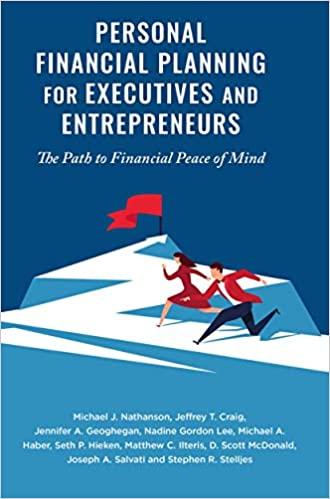Question
Question 2 If you calculated WACC for a firm, in what order (from largest to smallest) would you expect to see WACC, cost of equity
Question 2
If you calculated WACC for a firm, in what order (from largest to smallest) would you expect to see WACC, cost of equity (re), and cost of debt (rd)? All rates are after taxes, and assume that the firm operates at its target capital structure.
re > rd > WACC.
re > WACC > rd.
WACC > re > rd.
rd > re > WACC.
WACC > rd > re.
Question 3
Andresson Inc. has no debt, and it has two equally-sized divisions. Division A's cost of capital is 10.0%, Division B's cost is 14.0%, and the corporate (composite) WACC is 12.0%. All of Division A's projects are equally risky, as are all of Division B's projects. However, the projects of Division A are less risky than those of Division B. Which of the following projects should the firm accept?
The Division A project with a 9% return.
The Division A project with a 11% return.
The Division B project with an 11% return.
The Division B project with a 13% return.
The company-wide project with an 11% return.
Question 4
Which of the following statements is CORRECT?
A change in a company's target capital structure cannot affect its WACC.
WACC calculations should be based on the before-tax costs of all the individual capital components.
Flotation costs associated with issuing new common stock normally increase the WACC.
If a company's tax rate decreases, then, all else equal, its weighted average cost of capital will decline.
An increase in the risk-free rate will normally lower the marginal costs of both debt and equity financing.
Question 5
A company's perpetual preferred stock currently sells for $98.50 per share, and it pays an $7.00 annual dividend. If the company were to sell a new preferred issue, it would incur a flotation cost of 8.00% of the issue price. What is the firm's cost of preferred stock?
7.72%
8.22%
8.83%
9.10%
9.40%
Question 6
O'Henry Inc. has a beta of 1.15 and a tax rate of 30%. The risk free rate of interest is 5.00%; and the market rate of return expected on equity securities is 13.00%. What is the firm's cost of common equity based on the CAPM?
11.30%
12.35%
14.20%
15.35%
17.06%
Question 7
Muller Co. just paid a dividend of $0.60 on stock that is trading at $27.50 per share. They expect a growth rate of 8.00% (constant). Flotation costs are 5%. What is the cost of common equity based on the DCF approach?
9.42%
9.91%
10.48%
10.71%
11.51%
Question 8
A company issues bonds that yield 8.75% to investors with a after-tax cost of debt of 6.1%. Economists estimate the judgmental risk premium at 8.65%. What is an estimate of the company's cost of common equity?
12.59%
13.10%
14.63%
15.60%
17.40%
Step by Step Solution
There are 3 Steps involved in it
Step: 1

Get Instant Access to Expert-Tailored Solutions
See step-by-step solutions with expert insights and AI powered tools for academic success
Step: 2

Step: 3

Ace Your Homework with AI
Get the answers you need in no time with our AI-driven, step-by-step assistance
Get Started


